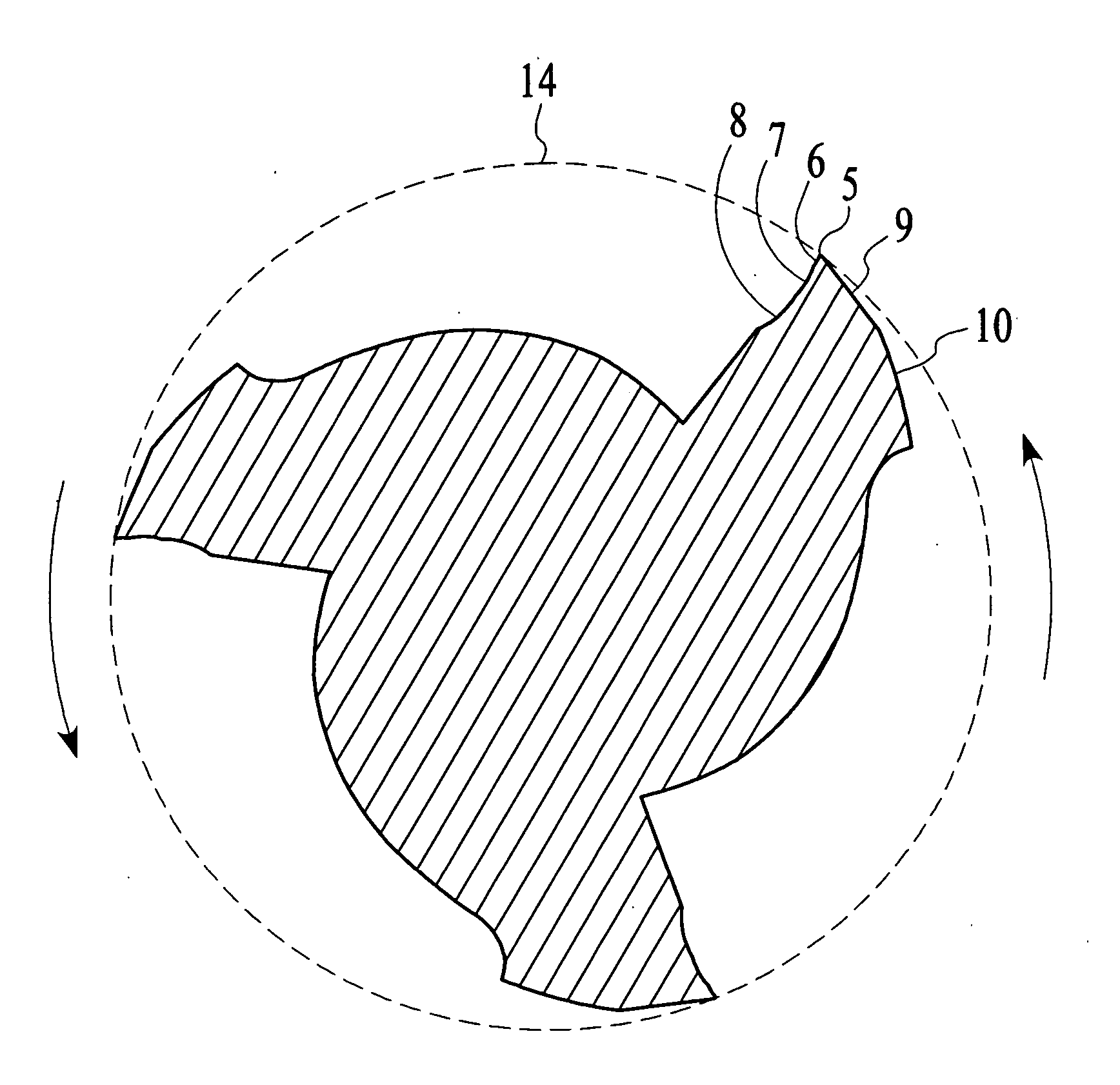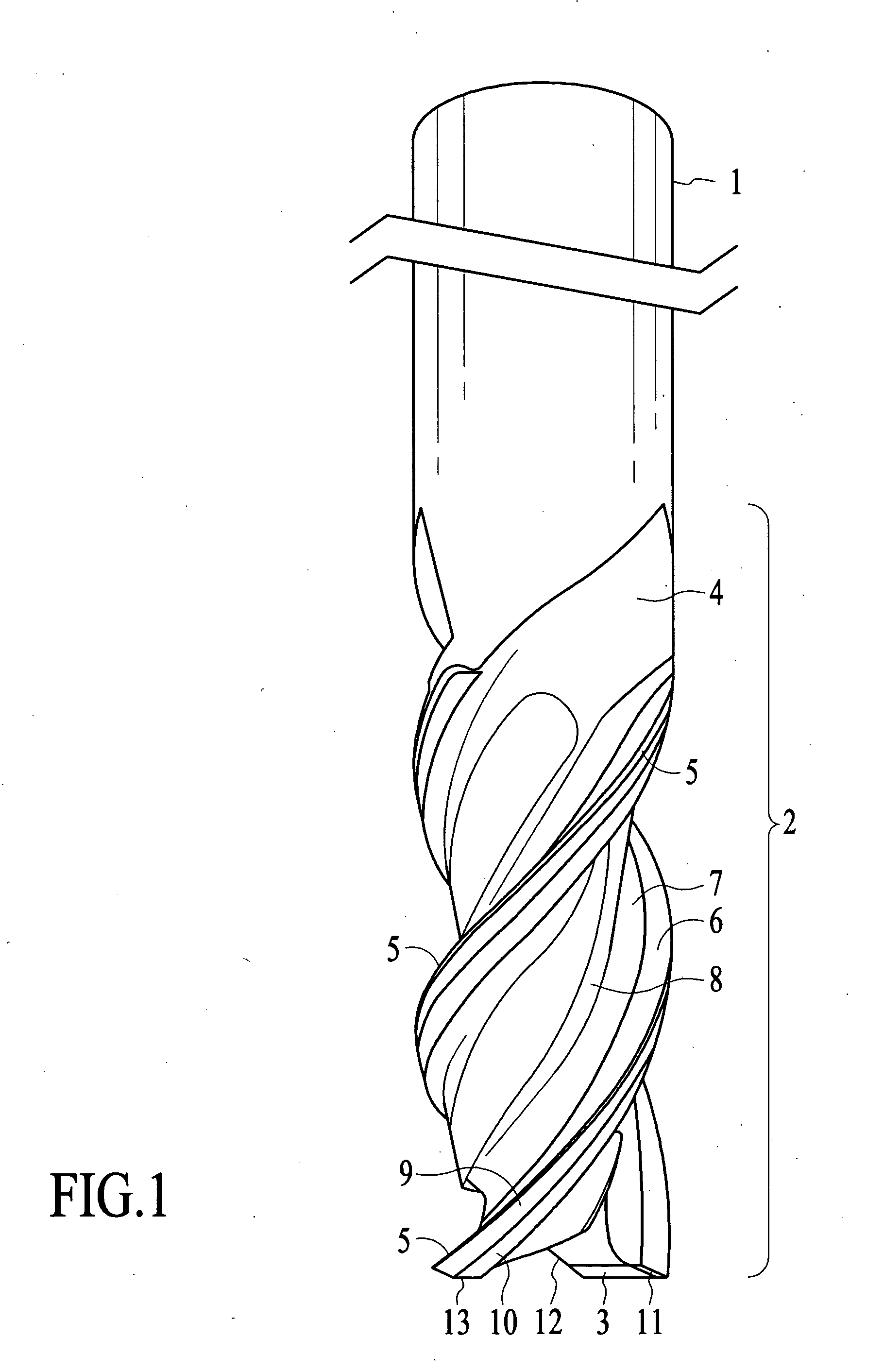End mill
a technology of end mills and end mills, which is applied in the direction of metal-working equipment, workpieces, milling equipment, etc., can solve the problems of beck end mills with several deficiencies and limitations, catastrophic tool failure, and rejected work pieces
- Summary
- Abstract
- Description
- Claims
- Application Information
AI Technical Summary
Benefits of technology
Problems solved by technology
Method used
Image
Examples
Embodiment Construction
[0028] An improved helical, fluted single-end end mill is preferably made from ultra-fine micro grain tungsten carbide material with a cobalt content that varies from the top of the end mill to the bottom of the end mill. The end mill has a cylindrical shank 1, at least two helically fluted cutting teeth making up the helical cutting section of said end mill 2 said cutting teeth contain a tertiary tooth face 8, a secondary tooth face 7 and a primary tooth face 6.
[0029] Said cutting teeth also include a variable margin 5. In the prior art, the margin is the unrelieved part of the periphery of the land adjacent to the cutting edge. The margin width is the distance between the cutting edge and the primary relief see, 9, measured at a right angle to the cutting edge. Margin widths in the prior art are uniform from the terminal end of the cutting teeth on the margins entire length as it spirals upward toward the shank section of the end mill 15.
[0030] In the present invention, a variab...
PUM
 Login to View More
Login to View More Abstract
Description
Claims
Application Information
 Login to View More
Login to View More - R&D
- Intellectual Property
- Life Sciences
- Materials
- Tech Scout
- Unparalleled Data Quality
- Higher Quality Content
- 60% Fewer Hallucinations
Browse by: Latest US Patents, China's latest patents, Technical Efficacy Thesaurus, Application Domain, Technology Topic, Popular Technical Reports.
© 2025 PatSnap. All rights reserved.Legal|Privacy policy|Modern Slavery Act Transparency Statement|Sitemap|About US| Contact US: help@patsnap.com



